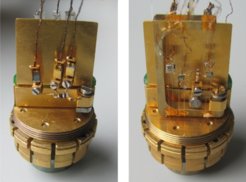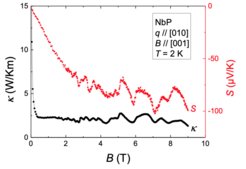Thermal transport and thermoelectric phenomena in unconventional metals and superconductors

Conduction of heat in a material via heat currents is a phenomenon analogous to charge transport via electrical currents. Thermoelectric phenomena arise from the entanglement of thermal and electrical transport processes due to (1) heat transport by charge carriers and (2) scattering processes between charge carriers and other heat-carrying quasiparticles, e.g. phonons. By studying the thermal conductivity κ, the thermopower S and the Nernst coefficient N at low temperatures and magnetic fields, we gain valuable information on charge and heat carriers and low energy excitations. Combined with knowledge of the electrical resistance, these measurements give the unique opportunity to disentangle different scattering mechanisms.

We are able to perform thermal conductivity, thermopower, and Nernst effect experiments at temperatures ranging from ~30 mK to 300 K, and in magnetic fields, up to 8 T. Our studies focus on materials with unconventional transport phenomena, such as superconductors, quasi-1D conductors, rare-earth systems, Weyl semimetals, and delafossites.
To expand our experimental capabilities, we are developing a microscale thermal conductivity probe for the measurement of highly conductive samples at low temperatures. The probe under development would make samples with typical sizes of a few 100 µm accessible. Through focused ion beam milling, the sample geometry will be tailored to be well-suited for highly sensitive measurements (i.e. high aspect ratio).

